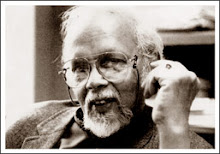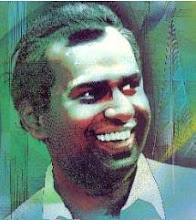Date:15/09/2010
Source: Daily News
During my schooldays I disliked history as a subject taught in the school. Perhaps recalling the past I feel that the history which we were forced to study was full of kings, queens, rulers, ministers, days, years and events.
But later on I found history as a stimulating source as it could be interpreted in terms of literary works. I came to know that certain narratives were known as historical novels, and some plays especially written by Shakespeare were known as historical plays.
We also had the counterpart in novels of W. A. Silva such as Vijayaba Kollaya and Daiva Yogaya and plays of John de Silva such as Sirisangabo and Sri Wickama. These creative works too had the added force of kindling and interest in finding the original sources, and especially the chronicles such as Mahavamsa and Rajavaliya.
In this direction it is observed that history plays a major role as a knowledgeable creative source for playwrights and other creative writers who so yearn to reinterpret in the best possible manner. 
The latest playscript titled 1617 written by Lucien Bulathsinhala, and performed as teaching and learning project of Ruhuna University is a good example of a creative work which needs attention.
In the first instance the playwright Lucien B, who also had conducted a theatre workshop with the undergraduates had taken the chance to select a crucial era in the history of our country.
The period being the Portuguese period, which had quite a lot of trials and tribulations both from a cultural and economic standpoint. I have not seen the play in performance, and as such my stance remains as a reader of the printed text of 1617 (Godage 2010).
As the play opens it is rather enigmatic as to where it happens. Then gradually we come to know that the place and period are all in the up country, and several characters that became talking points among the masses come to the forefront.
They are the King Senerat, who disrobed in order to be the heir to the throne, and his brother King Wimaladharmasuriya, and the queen consort named Kusumasana Devi, more known as Dona Katirina, and her two daughters and two sons.
What actually happens in the play may not have happened in the historic past. But a playwright and a director (both handled by Lucien) has the liberty to interpret to elucidate a central humanistic point. What Lucien has in mind could be summed as a conflict between the power and individual, at loggerheads.
The pivotal point is the kingship and what is wanted is the ruling power as against the individual liberty one wishes to obtain in a human frame.
This is sensitively captured in the character portrayal of Dona Katirina who comes to be known as Kusumasana Devi. She is made to reveal what had happened to her, in whose confession she tries not to defend King Wimaladharmasuriya, instead says that her mind and body were polluted by him, who gave a child each year, and consequently got her brother Senerat to disrobe and protect them, for his own benefit.
It looks as if Lucien as a dramatist uses language and situations challengingly giving vent to liberal imagination than attempting to screen historical Puritanism.
In this manner the playscript as a text is an alternative creation to this more accepted well made structures. He utilizes as a theatrical techniques the Brechtian alienation with a local flavour of making use of a singer cum announcer, who is not just a Pothe Guru but an extension of his function.
Songs and announcements are interspersed in order to retain the experimental structure of the historical message.
There is also a certain attempt on the part of the playwright to universalize his theatrical material by drawing parallels in the world history.
But I am not too sure whether it had been fulfilled as intended. I feel that playscripts are written not to be read but to be produced on the stage and seen by an audience. Anyway experimental plays have to crop up from time to time, and this particular attempt on the Ruhuna University is commendable.




































No comments:
Post a Comment